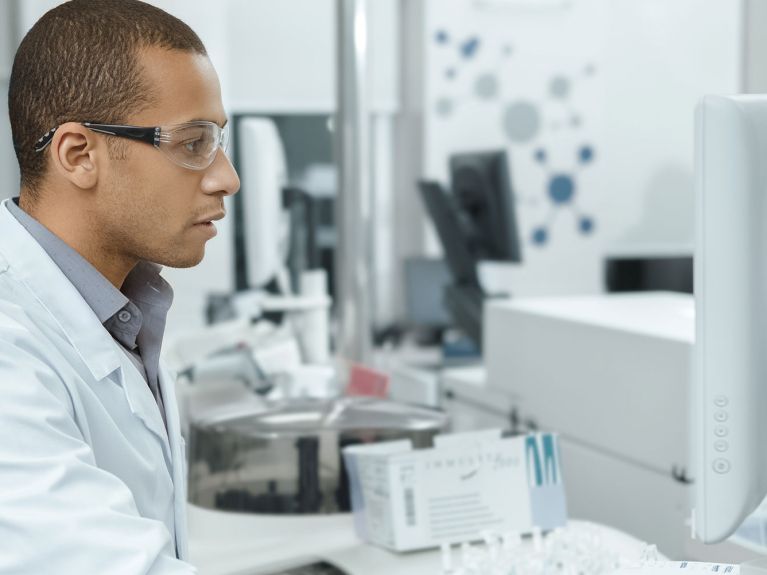Thinking in two different worlds
Careers that will still be sought-after in the future: bioinformatics combines biology and computer science and speeds up research.

Professor Andreas Hildebrandt teaches at Johannes Gutenberg University in Mainz, which has roughly 4,500 international students from over 130 countries. He explains why bioinformatics is a degree course that offers a rosy future:
“If the COVID pandemic had broken out a few years earlier we would have been confronted with a completely different situation. The virus and its variants would not have been identified so fast, and the development of vaccines and medicines would have taken longer. These successes are based to a considerable degree on the experiences of bioinformaticians – specialists in what is a rather young discipline in Germany. It is based on the insight that biologists always work with data in their research, irrespective of whether they are studying ant genetics or developing new medicines or agricultural pesticides. When analysing their results they are dependent on data processing methods.
Bioinformatics brings together both disciplines. It is of interest to computer scientists who consider pure informatics too abstract and appreciate working on concrete applications. However, understanding biological data is very difficult if you have never worked in a lab. On the other hand, life scientists need to understand how algorithms work when they want to analyse and evaluate biological data.
There are two variants of degree courses at universities in Germany: the method-oriented approach is closer to mathematics and computer science, while the application-oriented courses place stronger emphasis on the biological component. Our Master programme in applied bioinformatics at Johannes Gutenberg University in Mainz is specifically aimed, for example, at graduates with a Bachelor in the life sciences of medicine or biology.
There are currently large numbers of biology graduates on the labour market but still not enough graduates of bioinformatics. Students do not have to be able to program. What is important is a keen interest in logical thought and mathematics. Methods are not invented in our laboratories, but students must understand how they function and you need higher mathematics to do that.
The following applies equally to students who come from the life sciences and from IT: they must be in a position to switch to the respective other way of thinking. That is precisely where the great added value lies: bioinformatics is a fast-moving science, which means what is taught today is out-of-date tomorrow. Someone who develops an understanding for the ideas behind the methodology will always be able to adjust to addressing new problems.”
Prof Dr Andreas Hildebrandt works at the Institute of Informatics at Johannes Gutenberg University Mainz and is Director of the Gutenberg Teaching Council.